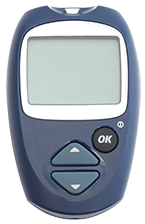
Safe Exercise
Be Safe While You Exercise
Medical Jewelry
Consider wearing diabetes identification (such as a MedicAlert bracelet).
This medical jewelry can tell people how to help you and could save your life.
To gain the health benefits of exercise you need to keep yourself safe and free from injury.
- Learn when to check your blood sugar when you exercise »
- Know how to prevent and treat low blood sugar (hypoglycemia) during and after exercise »
- Know how to do exercise safely when your blood sugar is high »
- Find out how to choose proper footwear for exercise »
- Know how to prevent muscle and joint injuries when you exercise »
- Know how to exercise safely in hot weather »
- Know how to exercise safely in cold weather »
- Be sure to take a rest day when you need it.
Exercise Safety Tips
Safety Alert
Know how to exercise safely when you have diabetes:
- Check your blood sugar before and after you exercise.
- Do not have alcohol, caffeine, cigarettes, or marijuana before you exercise.
- Avoid exercising within 2 hours after a heavy meal.
- Do not exercise if you are ill with a chest infection or flu. Allow yourself time to rest before re-starting your exercise routine.
Exercise and Low Blood Sugar
Doing exercise lowers your blood sugar and helps manage diabetes. During exercise, your muscles use the sugar in your blood and keep using it for many hours after exercise.
Check your blood sugar before and after you exercise. Do these checks for the first 5 sessions and anytime you make a change to your exercise program. Your blood sugar tells you how your body reacts to exercise.
Remember that low blood sugar (hypoglycemia) is a blood sugar reading of less than 4 mmol/L or when you feel the signs of low blood sugar. Notice patterns in how your body responds to exercise to help you predict low blood sugar.
Speak with your healthcare team to see what type of glucose monitoring device is best for you. You may be able to receive money to pay for the device.
Safety Alert
Know your risk of getting low blood sugar when you exercise and be prepared to take action.
- Be aware that insulin and Secretagogue medicines increase your risk of low blood sugar, especially after exercise.
- Always have a fast acting carbohydrate close by to eat.
Some diabetes medicines can cause low blood sugar (hypoglycemia), especially after exercise. Take extra care if you are on:
- Insulin
- Glyburide (Diabeta or Glynase)
- Glipizide (Glucotrol)
- Gliclazide (Diamicron)
- Glimepiride (Amaryl)
- Repaglinide (Gluconorm)
Be prepared for low blood sugar and have fast acting carbohydrates close by to eat (such as sugar tablets, juice or pop). Fast acting carbohydrates raise your blood sugar quickly.
> If you are taking a diabetes medicine that can cause low blood sugar
- Check your blood sugar before exercise. If your blood sugar is less than 5 mmol/L, eat a snack before you exercise. This will help you avoid low blood sugar during or after exercise. This snack should have a slower acting carbohydrate and protein like reduced-fat cheese and crackers or an apple. Slower acting carbohydrates raise your blood sugar slowly over a period of time.
- To avoid needing to snack before exercise, try to plan your exercise when your blood sugar is naturally higher. Plan your exercise about 2 hours after a meal (when your food is digested) or before taking your insulin.
- Check your blood sugar after exercise. If your blood sugar is between 4 to 5 mmol/L after exercise, eat your usual meal. Have a snack if your meal is more than 1 hour away. This snack should have a slower acting carbohydrate and protein like a slice of wholegrain bread with reduced fat cheese. Slower acting carbohydrates raise your blood sugar slowly over a period of time. Your blood sugar will keep dropping hours after exercise. The snack prevents low blood sugar after your exercise.
- Check your blood sugar before you drive. Your blood sugar must be above 5 mmol/L if you drive after exercise. This blood sugar level will prevent low blood sugar while you are driving. Recheck your blood sugar on long drives. Carry a fast acting carbohydrate and your glucometer with you in the car in case you need them.
- Your blood sugar levels will change after you start a new exercise program. You may have low blood sugar more often after you start. Talk to your healthcare team about your diabetes medicines if this happens. You will likely need the amount of diabetes medicine you take changed.
> If you are taking insulin
Avoid injecting insulin in an exercising muscle. For example, do not inject into your thigh if you are walking or cycling. Instead, inject insulin into sites on your belly.
> If you have had previous episodes of low blood sugar
Take extra care. Check your blood sugar before, during, and after you exercise. Your blood sugar tells you how your body reacts to exercise. Have proper nutrition and timing of medicines to avoid low blood sugar. It is safer and more effective to prevent low blood sugar than to treat it after it occurs.
> If you cannot tell when you have low blood sugar
Take extra care. Check your blood sugar before, during and after you do exercise. Your blood sugar tells you how your body reacts to exercise. Have proper nutrition and timing of medicines to avoid low blood sugar.
> If you are not taking insulin or a medicine from the Secretagogue class of medicines
Low blood sugar is rare. Still check your blood sugar before and after a few exercise sessions to know how your body reacts.
Exercise and High Blood Sugar
You may be concerned about exercising if your blood sugar is high. Most of the time, exercise will help lower your blood sugar.
If you are living with type 2 diabetes, follow the steps to exercise safely when your blood sugar is high:
- Make sure you are feeling well.
- Make sure you have taken your diabetes medicines as prescribed.
- Make sure you drank enough water
- Check your blood sugar before you start.
- If you blood sugar is 16.7 mmol/L or higher, you may try light exercise for 15 to 20 minutes.
- Watch for signs and symptoms of high blood sugar such as increased thirst, nausea, severe fatigue, blurred vision, or headache.
- Recheck your blood sugar.
- If your blood sugar is lower than what you started, keep exercising.
- If your blood sugar is higher than what you started, stop exercise and talk to your healthcare team
- Recheck your blood sugar after doing exercise.

If you are living with type 1 diabetes, talk with your healthcare team about how to exercise safely with high blood sugar.
Common Questions About Diabetes and Exercise
Keep your body safe by learning more about exercising with diabetes.
Avoid doing exercise within 2 hours after a heavy meal. Your body needs time to digest food before you exercise. If 2 hours hasn’t passed, you could choose light physical activity such as going for a slow walk with your dog, family, or friends.
Follow your usual eating and medicine schedule. Plan to exercise when you are not too full from a meal.
Do not have alcohol, caffeine, cigarettes, or marijuana before you exercise. These substances can:
- increase your heart rate
- increase your blood pressure
- make your exercise feel harder
It is not safe to exercise if your heart rate is above your target heart rate range.
Do not do exercise if you are ill with a chest infection, urinary tract infection (UTI), influenza, stomach flu, or COVID-19, or if you are feeling unwell.
If you have an infection and are taking antibiotics, your body needs time to rest and fight the illness. Talk to your family doctor or exercise team about when you can return to exercise.
When you are feeling better, re-start your exercise slowly over time. Start by doing half the time you had been exercising for, and less intensity. Think about how long you stopped doing exercise. It will take the same amount of time to build back up.
For example, if you are prescribed to walk 2 miles in 40 minutes (a 20 minute per mile pace) and you stop doing exercise for 2 weeks:
- Restart with 1 mile and build up slowly to 2 miles over the first week. Walk slower than your prescribed walking pace. Walk at a 22 minute per mile pace or slower.
- If you feel ready, work on speeding your walking pace back to your prescribed pace during week 2.
If you have questions, talk to your exercise team for help.
Your Blood Sugar When You Are Ill
You may notice a change in your blood sugar while you are ill, especially if you become dehydrated (loss of body fluids). Follow the tips below to help manage your blood sugar:
- Check your blood sugar more often when you are ill.
- Treat low blood sugar right away.
- Do not stop taking your insulin.
- Ask your doctor if you need to adjust your medicines.